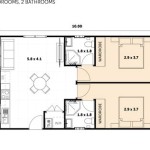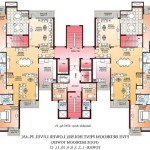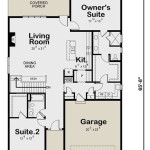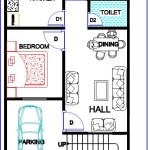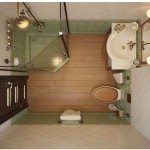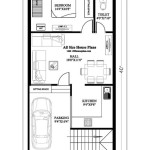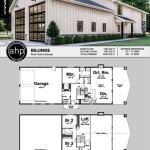House Design Ideas and Plans
Designing a house is an exciting but often daunting task. With countless factors to consider, from aesthetics to functionality, creating a home that perfectly aligns with your lifestyle and aspirations can feel overwhelming. Whether you're building a new home from scratch or renovating an existing one, meticulous planning is crucial to ensure a successful outcome.
In this comprehensive guide, we'll delve into the intricacies of house design, providing you with expert insights and practical advice. We'll explore various architectural styles, layout options, and design elements to help you make informed decisions throughout the design process.
Architectural Styles: A Journey Through Time
Choosing an architectural style sets the tone for your home's overall appearance and ambiance. From the classic charm of Victorian to the modern simplicity of contemporary homes, each style has its unique characteristics and design principles. Here are some popular architectural styles to inspire your vision:
- Victorian: Characterized by intricate ornamentation, bay windows, and steeply pitched roofs.
- Colonial: Inspired by historical homes, this style features symmetrical facades, clapboard siding, and central chimneys.
- Craftsman: Known for its warm, inviting atmosphere, this style emphasizes natural materials, exposed beams, and built-in cabinetry.
- Modern: Defined by clean lines, open spaces, and large windows, this style seamlessly blends form and function.
- Contemporary: The most flexible style, it incorporates elements from various architectural movements, resulting in a unique and eclectic look.
Layout Options: Creating Spaces that Flow
The layout of your home plays a pivotal role in how you live and interact within it. Consider the following layout options to find the one that best suits your lifestyle and preferences:
- Single-Story Home: Ideal for those who prefer everything on one level, this layout offers easy accessibility and a cohesive living space.
- Two-Story Home: Provides more vertical space, allowing for separate living and sleeping areas. It's perfect for families who value privacy and defined spaces.
- Split-Level Home: Creates a sense of multiple levels within a single structure. This layout is often used to maximize space and create distinct living areas.
- Open-Concept Floor Plan: Eliminates walls between the living room, dining room, and kitchen, creating a spacious and airy atmosphere.
- Traditional Layout: Features separate rooms for different functions, providing more privacy and defined living spaces.
Design Elements: Enhancing Aesthetics and Functionality
Beyond architectural style and layout, various design elements contribute to the overall character of your home:
- Exterior Finishes: The materials used on the exterior of your home, such as siding, roofing, and brick, play a significant role in its aesthetic appeal.
- Windows and Doors: The size, shape, and placement of windows and doors impact both the interior and exterior appearance of your home. Choose these elements carefully to enhance natural light, ventilation, and views.
- Color Palette: The colors you choose for your home's interior and exterior will set the mood and ambiance. Consider the psychological effects of colors and how they complement each other.
- Lighting: Lighting plays a crucial role in creating a comfortable and functional living environment. Incorporate different types of lighting, such as ambient, task, and accent lighting.
- Landscaping: The design of your yard and outdoor spaces should complement the architecture of your home. Consider factors such as privacy screening, focal points, and outdoor entertaining areas.
Planning and Preparation: Laying the Foundation for Success
Before embarking on a house design project, thorough planning and preparation are essential:
- Define Your Needs and Budget: Determine the size, style, and layout that meets your family's requirements and financial constraints.
- Research and Consult: Gather inspiration and consult with architects, designers, and contractors to gain expert advice and explore different options.
- Create a Design Brief: Outline your vision for the house, including specific design elements, materials, and finishes.
- Secure Building Permits: Obtain the necessary building permits from the local authorities to ensure your project meets building codes and regulations.
- Develop a Construction Timeline: Estimate the construction timeframe and establish a realistic timeline for completion.
Conclusion: Turning Dreams into Reality
Designing a house is an iterative process that requires creativity, planning, and attention to detail. By carefully considering architectural styles, layout options, design elements, and practical aspects, you can create a home that perfectly aligns with your aspirations. Remember that the journey is as important as the destination, and enjoy the process of transforming your design ideas into a tangible reality.

Top 40 Unique Floor Plan Ideas For Diffe Areas

35 Amazing House Plan Design Ideas For Diffe Areas

Floor Plan Ideas Design Services Residential 3d Simlpe House With Plans Extension Blueprint Architecture Iração Do Stock

Home Design Plan 14x18m With 3 Bedrooms Ideas

Small House Design Ideas Finished Projects Blender Artists Community

Free 3 Bedroom House Plans Interior Design Ideas

Home Design Get Best Interior Ideas And Planning

Gorgeous Guest House Floor Plans Interior Design Ideas Alisha Taylor

Gorgeous Guest House Floor Plans Interior Design Ideas Alisha Taylor

41 Elegant Home Plan Design Ideas Engineering Discoveries

